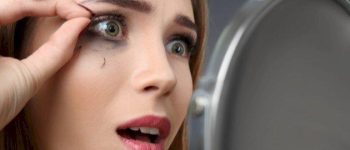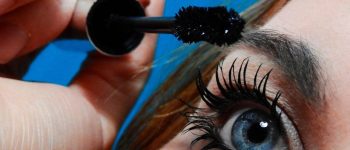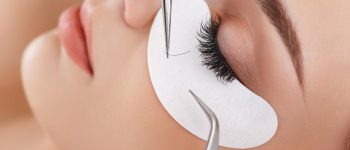You’ve just noticed a bump on your eyelid after getting lash extensions. Uh-oh, there’s a chance it could be a stye or chalazion. Don’t worry, though! In this article, we’ll delve into the differences between them, what causes them, and, most importantly, how to treat them effectively. Let’s dive in together!
Disclaimer: Before we continue, I want to make it clear that the content and information provided here are for informational and educational purposes only. They should not be considered medical advice. Always consult your own Medical Provider regarding any concerns you have about your specific health before implementing any recommendations or suggestions from our Website.
Styes vs. Chalazia: What’s the Difference?
It’s easy to confuse a chalazion and a stye since they both appear as bumps on the eyelid. However, they have distinct symptoms, causes, and treatments.
What are Styes?
Styes are caused by an infection in the hair follicle or oil gland on your eyelid. They may present symptoms such as crusting, pain, swelling, redness, itching, and a pimple-like appearance.
On the other hand, chalazia are not caused by infection and are generally not painful or itchy. They feel firmer to the touch and can grow larger than styes.
Styes from Lash Extensions: A Closer Look
Can eyelash extensions cause styes? Yes, they can, but it’s important to note that the link between lash extensions and styes is indirect.
When eyelash extensions are applied under unhygienic conditions, bacteria can be introduced to the eye area. These bacteria can then infect the hair follicle or oil gland, resulting in the development of a stye. Factors such as blepharitis, diabetes, certain skin conditions, and a history of styes can increase the risk.
How to avoid getting a stye from eyelash extensions:
- Go to a Pro: Choose a licensed and certified lash technician who prioritizes hygiene and uses clean tools and products.
- Follow Aftercare Instructions: Listen to your lash technician’s advice on caring for your extensions, especially cleaning them daily with a gentle, oil-free cleanser.
- Don’t Wear Expired Eye Makeup: To minimize the risk of bacterial contamination, discard expired eyeliner, eyeshadow, and mascara. Avoid sleeping in eye makeup, even if it’s fresh.
- Don’t Touch Your Eyes With Dirty Hands: If you must touch your eyes, wash your hands thoroughly beforehand, especially when inserting or removing contact lenses.
How to treat a stye with eyelash extensions:
- Apply warm compresses several times a day for 10 minutes each time.
- Use over-the-counter topical antibiotic ointments.
- Clean your eyelids frequently.
- Avoid wearing makeup.
- Contact your doctor if the situation persists after a few days.
Chalazion from Eyelash Extensions: Is It Possible?
Can eyelash extensions cause a chalazion? Yes, they can. However, it’s vital to note that a properly trained lash technician will not allow the glue used in the extension process to touch the skin of the eyelid. Improperly applied extensions or blockage of the oil glands during or after the extension procedure can potentially lead to the formation of a chalazion.
Factors that contribute to the development of a chalazion with eyelash extensions:
- An inexperienced, unqualified individual: Beginners may accidentally attach extension fibers to the skin instead of the lashes, causing blockage of the oil gland and subsequent chalazion formation.
- Unhygienic conditions: Lack of cleanliness during the extension procedure can introduce bacteria to the eye area, potentially leading to a stye and, in turn, a chalazion.
- Not cleaning your lashes daily: Failing to remove oil, dead skin cells, dirt, and makeup residue from the base of your lashes can potentially block the oil glands. Sleeping with eye makeup on increases the risk.
- Applying eyeliner to the inside of your lash line: Lining the skin between your lashes and eyes can clog the oil glands. Additionally, using expired eye makeup can contribute to the development of styes, which can evolve into chalazia.
How to treat a chalazion with eyelash extensions:
- Apply warm compresses several times a day for 10 minutes each time to promote drainage.
- Gently massage the affected area.
- Clean your eyelids frequently.
- Contact a doctor if the condition doesn’t improve after a few days.
FAQs
Can lash extensions cause styes or chalazia? Yes, both styes and chalazia can be caused by factors related to lash extensions, such as unhygienic conditions and improper aftercare.
Are lash extensions safe? Lash extensions can be safe when applied by a licensed and certified professional and when proper hygiene and aftercare practices are followed.
When should I consult a doctor? If you notice persistent symptoms or if the bump on your eyelid worsens after a few days, it is advisable to consult a medical professional.
References
- Cleveland Clinic (2021). Chalazion. Retrieved from https://my.clevelandclinic.org/health/diseases/17657-chalazion (Accessed on 13 October 2022)
- Mayo Clinic. Stye (sty). Retrieved from https://www.mayoclinic.org/diseases-conditions/sty/symptoms-causes/syc-20378017 (Accessed on 13 October 2022)
- Kierstan Boyd – medically reviewed by Odalys Mendoza, MD (2022). What Are Chalazia and Styes? Retrieved from https://www.aao.org/eye-health/diseases/what-are-chalazia-styes (Accessed on 12 October 2022)
- Board of Barbering and Cosmetology. Eyelash Extensions Safety Tips. Retrieved from https://www.barbercosmo.ca.gov/forms_pubs/eyelash_safetytips.pdf (Accessed on 12 October 2022)
- American Optometric Association. Chalazion. Retrieved from https://www.aoa.org/healthy-eyes/eye-and-vision-conditions/chalazion?sso=y (Accessed on 13 October 2022)
- Nicole Hollimon – medically reviewed by Whitney Seltman, OD (2020). Makeup Tips for Dry Eye. Retrieved from https://www.webmd.com/eye-health/makeup-tips-dry-eye (Accessed on 13 October 2022)




